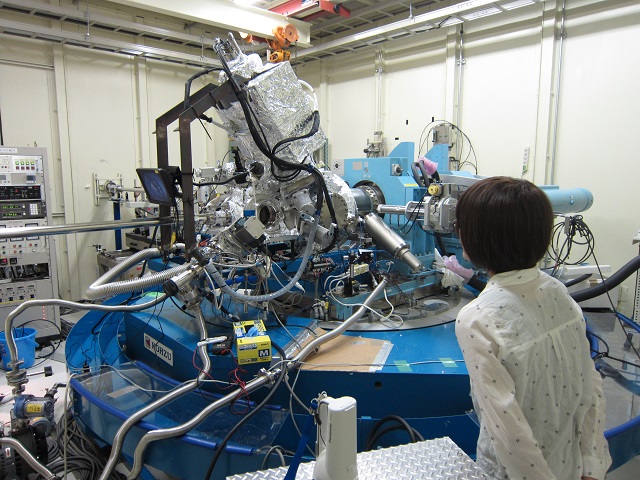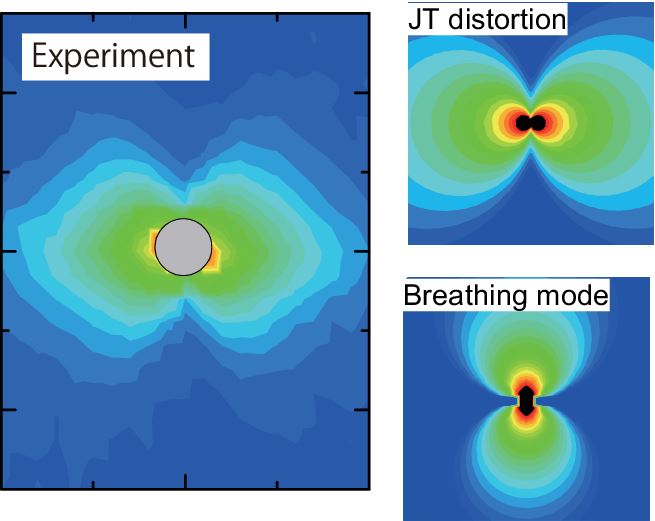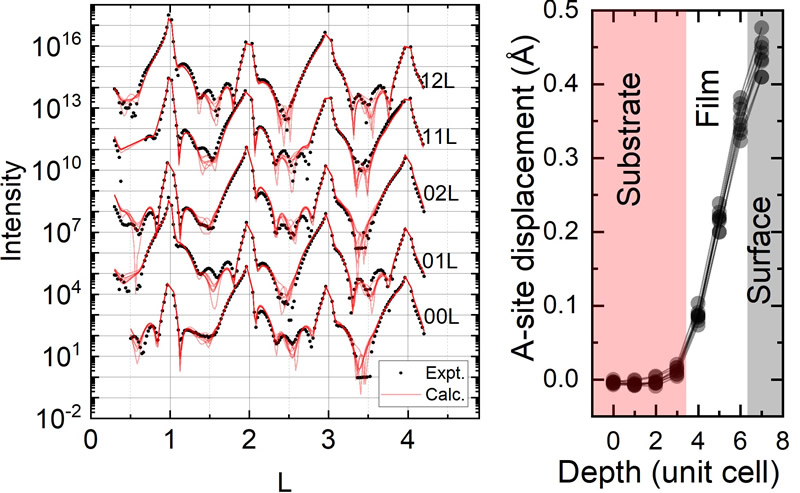Condensed Matter Experiment Ⅰ
Microscopic Structural Condensed Matter Physics
http://www.structure.phys.tohoku.ac.jp/
Staff
| Professor : | Yusuke Wakabayashi | |||
| Associate Professor : | Hidekazu Shimotani | Makina Saito | ||
| Assistant Professor : | Takeshi Hara |
Research

We concentrate on structural study and interpretation; specimens are provided by our collaborators. This style allows us to enjoy studying wide range of materials simultaneously. For example, we have studied (1) 2p electron systems: organic semiconductors, (2) 3d electron systems: transition metal oxides (crystal, interface, and ultrathin films), (3) 4f electron systems: magnets, valence fluctuating systems, etc.
For the observation of fluctuation, x-ray diffuse scattering is examined. Fig. 2 shows an example, anisotropic diffuse scattering around a Bragg reflection. By comparing with calculated intensity distribution (right hand side), it was found to be originated from Jahn-Teller mode distortion caused by the orbital liquid state. Diffraction theory was used to extract the information of orbital short range correlation, which cannot be measured by other experimental methods.
We have recently working on Bayesian inference of interfacial structure determination based on the surface x-ray scattering measurements. Fig. 3 shows an intermediate step of the interface structure analysis of a metal oxide. Our new method based on the informatics enables us to perform unprecedented structural study of interfaces.



